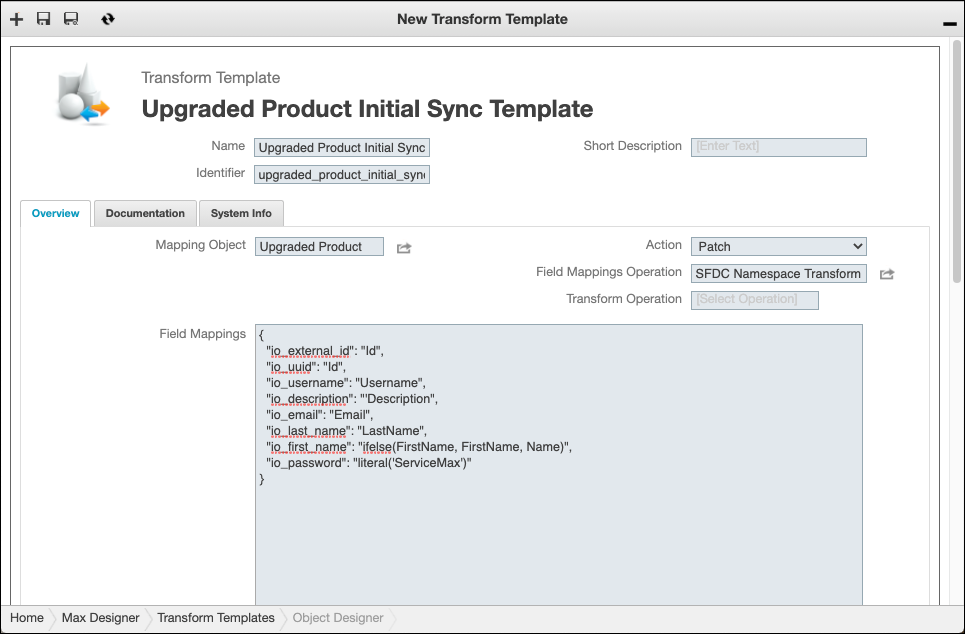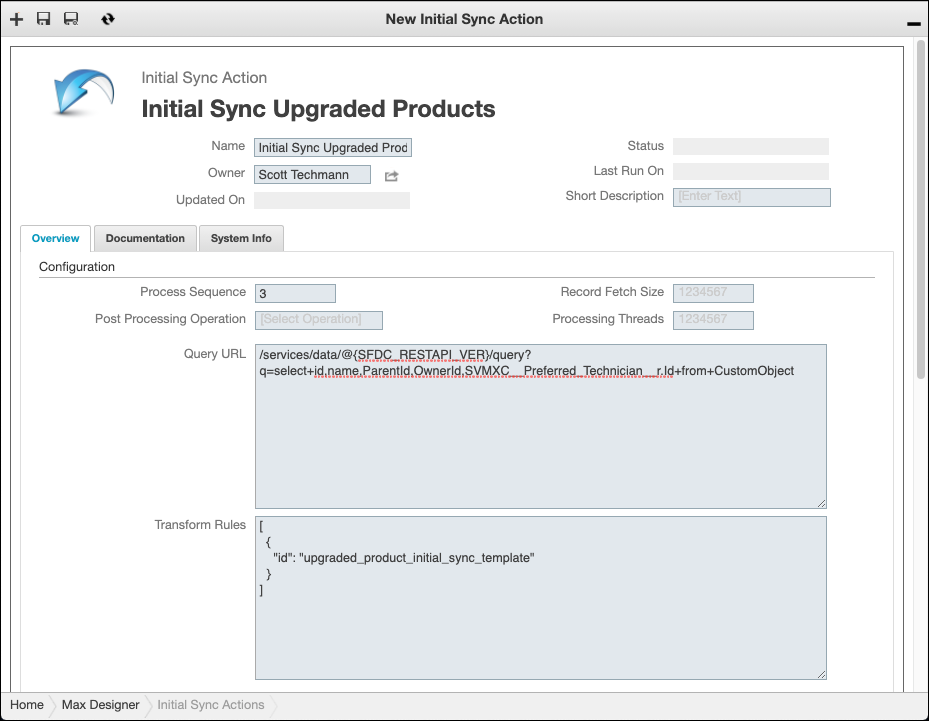Configuring Initial Sync for Custom Objects
Service Board initial sync configuration for custom objects is performed by completing a different set of steps than is required for standard master and transactional objects.
To configure initial sync for custom objects:
1. In Max Designer, on the Developer Tools ( ) launchpad menu, click Transform Templates, and then in the list view, in the top left corner, click Create (
) launchpad menu, click Transform Templates, and then in the list view, in the top left corner, click Create ( ).
).
2. On the record page, complete the fields as follows, and then in the top left corner, click Save and Close ( ).
).
Field | Value |
|---|---|
Name | The name for the template, for example, Upgraded Product Initial Sync Template. |
Identifier | A unique identifier, for example, upgraded_product_initial_sync_template. |
Mapping Object | The custom object for which you are configuring initial sync, for example, Upgraded Product. |
Action | Patch |
Field Mappings Operation | SFDC Namespace Transform |
Field Mappings | JSON field mapping code for the fields of the Salesforce custom object to be synched to the corresponding Service Board object. |

3. On the Developer Tools ( ) launchpad menu, click Initial Sync Actions, and then in the list view, in the top left corner, click Create (
) launchpad menu, click Initial Sync Actions, and then in the list view, in the top left corner, click Create ( ).
).
4. On the record page, complete the fields as follows, and then in the top left corner, click Save and Close ( ).
).
Field | Value |
|---|---|
Name | The name for the initial sync action, for example, Initial Sync Upgraded Products. |
Process Sequence | The relative order in which to execute the associated Initial Sync Action during the overall initial sync process. If the custom object has dependencies on other objects, such as fields that reference other objects, the associated dependent objects must be synched first. |
Query URL | The relative URL and query parameters used to retrieve records from the source system, for example: /services/data/@{SFDC_RESTAPI_VER}/query?q=select+id,name,ParentId,OwnerId,SVMXC__Preferred_Technician__r.Id+from+CustomObject |
Transform Rules | The rules to transform records fetched from the source system, with the full identifier of the target transform template set as the id value, for example: [ { "id": "custom_object_init_dev_custom_object_patch" } ] |

For more information: